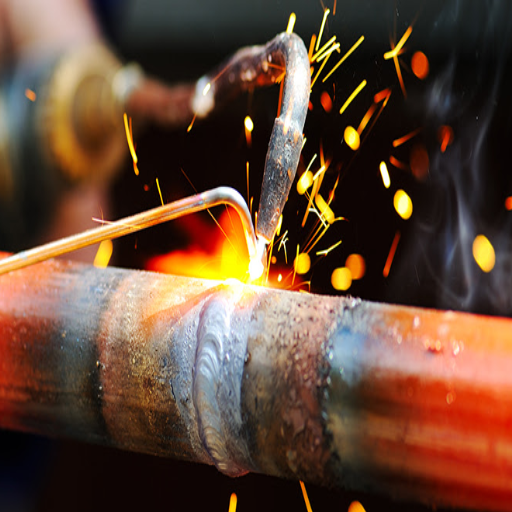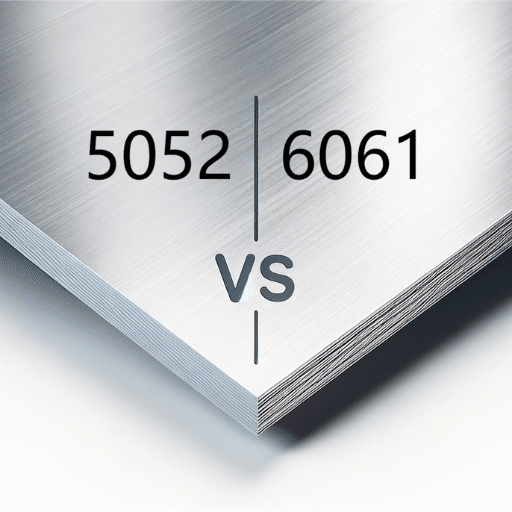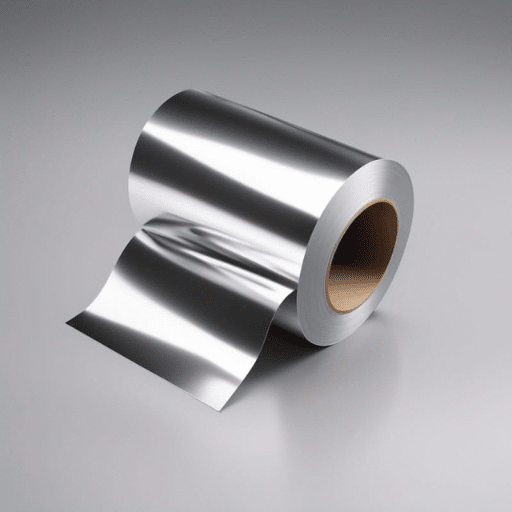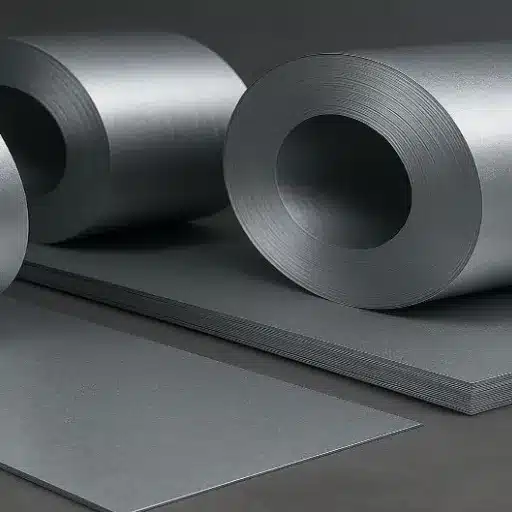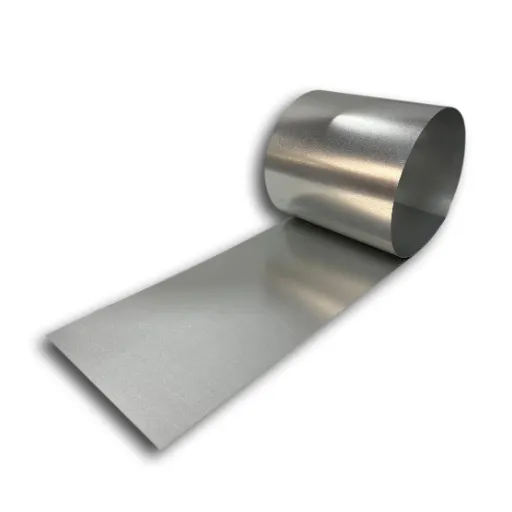Joining metals is a foundational process in countless industries, from automotive and aerospace to electronics and construction. The methods used to achieve strong, long-lasting bonds depend not only on technique but also on the alloys employed during the joining process. This article dives into the critical distinctions among brazing, welding, and soldering—three key techniques for metal joining—and explores the specific alloys that make each method possible. Whether you’re a professional seeking to refine your technical knowledge or an enthusiast curious about the science behind these processes, this guide will provide a detailed, authoritative overview to enhance your understanding.
Introduction to Metal Joining
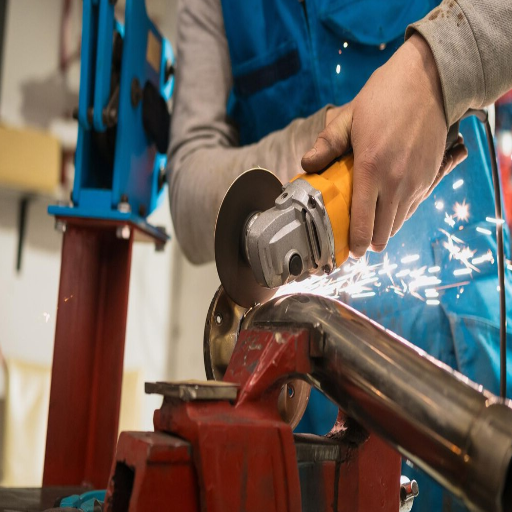
The Importance of Alloys in Modern Engineering
In modern times, a lot of engineering is about obtaining properties from alloys by mixing the base metal with other elements for strength, corrosion resistance, or thermal performance. This allows the engineer to design materials for specific applications, whether needing strength in skyscrapers or heat resistance in jet engines. Steel, an alloy of iron and carbon, is absolutely a material that needs no introduction, as the most common in construction and general manufacturing owing to its unbeatable ratio of strength to cost. Aluminum alloys, on the other hand, have pretty much dominated the aerospace sector, supported by claims of incredible lightness and considerable strength.
Acting upon theories of improving material weakness, an alloy can also improve its performance. For example: stainless steel consists of chromium in steel, which forms an oxide layer that prevents rusting, especially under potent corrosive accords. Similarly handcrafted brass is most suitable in electrical and plumbing circumstances because it has the perfect balance of electrical conductivity, flexibility, and resistance against external wear. By varying the relative amounts of certain particular elements, engineers actually can change several mechanical properties depending on the precise requirements of the application.
Besides giving particular physical properties to alloys, the further production of materials on the basis of particular alloys is an environmentally friendly activity and minimizes dependence on certain resources. Things like aluminum alloys can be recycled, reducing the need for energy-intensive production; advances in superalloys are key technologies that help realize higher operational efficiencies in power generation and propulsion systems. Thus, strategic use of alloys became paramount, setting the pace in technical advancement, yet have recently been accepted as a key contributing factor toward having allied and sustainable development, hence proving them indispensable to engineering evolution.
Significance of Alloys in Joining Metals
Alloys play a major part in joining metals by improving material compatibility, enhancing mechanical properties, and ensuring joint durability. Using proper alloy compositions in welding, brazing, or soldering processes allows metals to be joined strongly and reliably. They are made to withstand problems such as cracking, corrosion, and thermal stresses like those encountered in normal metal joining. These, therefore, find use in the construction, automobile, aerospace, and electronics industries.
The importance of alloys lies in their ability to optimize performance under different conditions. For example, an alloy such as stainless steel or a nickel-based superalloy exhibits excellent resistance to heat so as to keep the joint stable under harsh conditions of extreme temperature for long exposures. On the other hand, aluminum alloys are much sought after for their very low weight when compared to their strength, useful in industries that value efficiency alongside structural integrity. These properties are in a sense generalized properties that help alloys meet very strict requirements on critical projects, putting them ahead of pure metals in such cases.
Then, another important aspect of alloys refers to the capability of facilitating compatibility between two or more different types of metal during the joining process. Very often in the industrial world, metals having different properties are to be joined. Utilizing alloys as filler materials serves to fill in property gaps-for example, the rates of thermal expansion, which might otherwise cause distortion or failure throughout the joining process.
Understanding Alloys and Their Composition
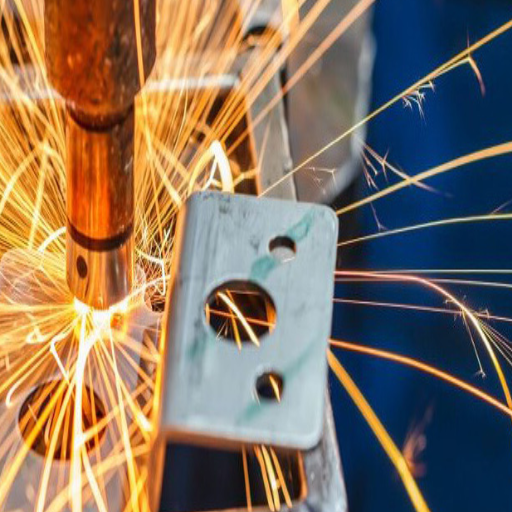
What is an Alloy?
An alloy is a metallic substance produced by mixing two or more elements, one of which is a metal. Such composites have enhanced or more suited properties, often superior to those of the individual constituents. The main purposes for which alloys are produced are strength, corrosion resistance, thermal conductivity, and workability. For example, steel, being an alloy of iron and carbon, is stronger and more durable as compared to iron.
Based on their manner of combination and occupation of space in a lattice structure, they may broadly be divided as substitutional or interstitial in nature. Substitutional alloys would substitute for some of the parent metal atoms with atoms of similar size, whereas interstitial alloys incorporate smaller atoms into the interstices between the primary metal atoms. Intricate mixing changes electron interaction and atomic bonding finely enough to bestow the desired mechanical and physical properties on the metal.
Computer modeling and material simulations are used in modern alloy design to fine-tune compositions and push the boundaries of these man-made materials. Innovative alloys are one of the ways aerospace to medical device-industry sectors maintain their stringent demands on performances.
Composition of Common Joining Alloys
Joining alloys is critical in various applications such as soldering, brazing, and welding. They are usually a carefully balanced combination of elements to optimize such performance characteristics as melting point, mechanical strength, corrosion resistance, and thermal conductivity. The alloys are made such that they provide for strong bonding of the materials with minimum defects arising from porosity or thermal stresses.
- Soldering Alloys: Most soldering alloys are tin alloys. The older compositions of Sn-Pb (tin-lead) are thought to have dominated the field since their behavior was predictable and they had low melting points in the range of (183-190°C). Tin-lead alloys have been considered hazardous due to environmental and health concerns, and lead-free alternatives have consequently been sought. Some of these include Sn-Cu (tin-copper), Sn-Ag-Cu (tin-silver-copper), and Sn-Bi (tin-bismuth). For example, the very popular SAC305 consists of roughly 96.5% tin, 3% silver, and 0.5% copper. They are all formulated to preserve wettability and mechanical properties while complying with regulations such as RoHS (Restriction of Hazardous Substances).
- Brazing Alloys: Brazing alloys are for meeting at somewhat higher temperatures (generally about 450°C or above) and usually are made of silver, copper, zinc, and nickel. For example, silver-based alloys like Ag-Cu-Zn possess good capillary action and corrosion resistance and are therefore ideal for very fine brazing applications in HVAC and automotive industries. Nickel-based brazing alloys mostly comprise elements like chromium and boron and are used where a high operating temperature environment and critically high stress are present, such as gas turbines or exhaust systems, since these retain high resistance to oxidation.
- Welding Alloys: Welding consumables, such as filler metals, should be as close to the base metals as possible to prevent metallurgical incompatibilities. Typical welding alloys include carbon steel wires (mainly iron with carbon, manganese, and silicon) and stainless steel electrodes comprising chromium, nickel, and molybdenum for corrosion resistance. Aluminum alloys such as Al-Si or Al-Mg are in common production for lightweight structural applications, while specialty alloy systems like titanium or cobalt-based alloys resolve high-performance applications, including aerospace and biomedical ones.
The joining alloys are refined through precision alloying and further processing to address the specific requirements of modern engineering disciplines. The continued interfacing of computational metallurgy with real-world testing guarantees that the materials deliver moving outward from the highest level of performance, reliability, and sustainability.
Why Alloys are Essential for Metalwork
Due to their versatility and enhanced properties, alloys occupy the center stage in the theater of modern metalworking. Pure metals are generally becoming shy of the demanded strength, corrosion resistance, or thermal stability for working applications requiring exact demand. By combining two or more elements to form an alloy, metalworkers can modify the metals in view of tensile strength, ductility, hardness, etc., according to specific industrial requirements.
For example, stainless steel most a generalized alloy-is iron combined with chromium and nickel, which affords a very high corrosion resistance and finds wide application in construction, medical devices, and food processing equipment. Aluminum alloys will be of specific importance to the aerospace industry for its high strength-to-weight ratio and good fatigue resistance. New ways of dealing with metals, such as powder metallurgical and additive manufacturing processes, further augment the realm of alloys and give a route for making complicated components with superior mechanical properties.
The influence of alloys goes beyond mechanical strength. They have a stake to play in sustainability by bringing in recycled materials. The use of high-strength-lightweight alloys means that transportation and construction industries can become less material and energy-intensive. Also, due to the precise compositions of alloys, types of components are built longer and require frequent replacements. The whole combination of performance, adaptability, and sustainability makes alloys essential to the future of metalworking.
Types of Alloys Used for Joining Metals
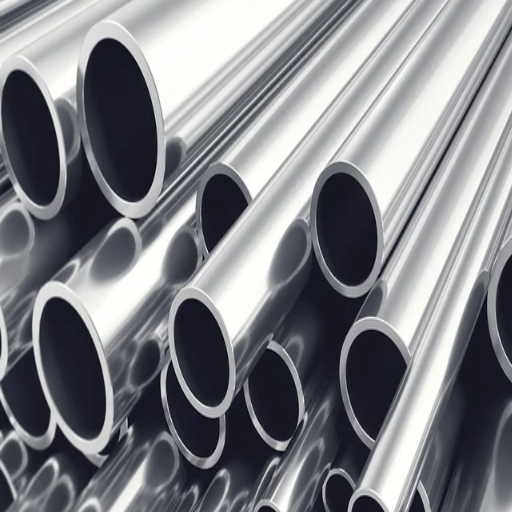
Soldering Alloys: Tin-Lead and Silver-Based
Being lower melting point and having good wetting properties with different base metals, tin-lead alloys have long been regarded as the best standard for soldering. Tin-lead alloys–mostly 60% tin and 40% lead–are a perfect match for thermal performance with mechanical reliability. They allow poison-free, uniform soldering while minimizing voids and defects in the solder joint. Slight variations in composition lead to several tin-lead solder alloys. The eutectic composition allows the alloy to go through a quick change from liquid to solid without going through a plastic phase, which ensures accurate and stable solder connections.
Alternatively, these silver-based alloys find increased employment where higher strengths in joints, resistance to thermal fatigue, and conductivity to electrical currents are considered essential. These alloys combine silver with copper, zinc, or tin, producing material properties that are viable at high temperatures and under tough operating conditions. High-performance silver-bearing solders such as SAC alloys (containing tin, silver, and copper) have become the preferred choice for lead-free applications due to environmental concerns and strict regulatory compliance, including RoHS guidelines.
Further, drafted and developed in modern times, the tin-lead and silver soldering alloys, with their fitted capabilities, have acquired further enhancements. Tin-lead solders are thus most commonly found in uses where lead content regulations allow, such as aerospace and military electronics, while silver-based formulations are charting the path towards sustainable yet superior soldering solutions in consumer electronics, automotive manufacturing, and renewable energy systems.
Brazing Alloys: Nickel-Based and Copper-Based
Nickel-based brazing alloys are the best metal brazing alloys for trash resistance and high-temperature strength, which they share with stainless steel and other compatible materials. These alloys contain small amounts of chromium, silicon, boron, or phosphorus, with fluxing action helpful in promoting the flow and effectiveness of brazed joints. Nickel-based brazing alloys find application in aerospace, automotive, and power generation industries, where they join components subject to thermal and mechanical stresses. These alloys are operational at temperatures sometimes exceeding 1,000°F (538°C), ensuring strength and stability even in harsh work environments.
Copper-based alloys, on the contrary, are mostly employed for their remarkably strong bonding action and relative economical aspect. These alloys serve well to join ferrous and non-ferrous metals, steel and brass in informal terms, in HVAC systems, plumbing, and manufacturing applications. Copper-phosphorus alloys are very beneficial as self-fluxing on copper base materials, thus simplifying processes by eliminating the need for additional flux. With melting temperatures usually lying anywhere between 1,100°F and 1,600°F (593°C and 871°C), copper alloys fill the reference of intermediate-temperature resistance applications.
Uniquely calculated for performance, nickel-based and copper-based brazing alloys find their particular place and application in modern manufacturing. Continuous advances in alloy composition further ensure improvements in mechanical reliability, corrosion resistance, and application versatility will continue to be the hallmark of several industrial directions.
Welding Alloys: Characteristics and Uses
Welding alloys are vital to a great many industrial and structural applications, providing strength, durability, and flexibility in effectively joining two base metals. These alloys are custom-made, each sufficiently competent to accommodate and perform in given welding processes, such as MIG, TIG, or arc welding. Some common welding alloys, which include steel-based ones, aluminum alloys, and nickel-based alloys, are used for different roles according to their composition and related performance characteristics.
Steel-based welding alloys, which can usually be categorized as low-alloy and high-alloy types, are best known for unusual mechanical properties and are cost-effective. They have very high tensile strength and are used mostly in construction, automotive, and heavy manufacturing. Aluminum welding alloys are mostly used in aerospace, marine, and transportation industries, given their lightweight nature and excellent corrosive resistance. On the other hand, nickel-based welding alloys are heat resistant and useful for applications that require high temperatures, such as power generation or chemical processing plants.
Meanwhile, further exploration in metallurgy leads to widening the range of possibilities for welding alloys with enhanced resistance to cracking, minimal oxidation characteristics, and high versatility toward various base materials. Low spatter emission, good flow under heat, and resistance to porosity are also some features that verify their dependability.
Since these welding alloys address ever-changing industrial applications, the evaluation and improvement of these alloys never cease. As these welding alloys form the backbone of infrastructure, manufacturing, and technological advancement, research and innovation in their design and application are even more warranted.
Applications of Alloys in Various Industries
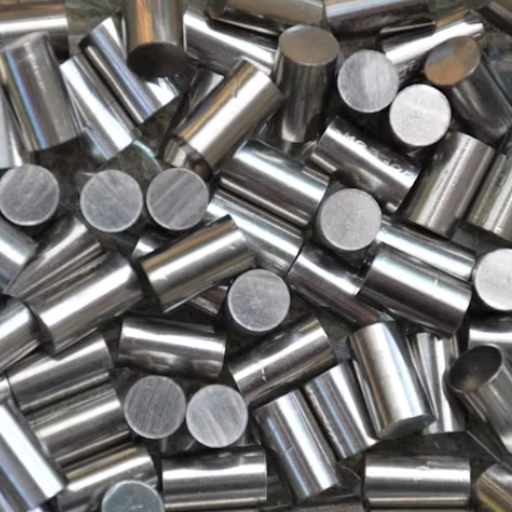
Automotive Industry: Enhancing Durability
The automotive sector, from the standpoint of durability and performance of vehicle parts, has remained dependent on advanced alloys. Modern-day vehicles are subjected to more stringent operating conditions such as increased mechanical stresses, thermal extremes, and corrosive environments. High-strength steel alloys are used in major structural components to prevent crashworthiness and load from bearing it. These materials have tensile strength; that is, they can resist huge mechanical forces either during operations or collisions and yet, from another point of view, must also be able to contribute to the reduction of weight, thereby helping in fuel efficiency.
Aluminum alloys are also needed for producing lightweight vehicle frames, engine blocks, or wheels. Their low density and corrosion resistance, along with superior heat dissipation properties, would make them handy in giving a good edge to vehicle performance in terms of weight. Apart from helping to reduce fuel consumption, these materials also assist in keeping within the environmental standards regulated by law. Through innovations such as that of aluminum-lithium alloys, which provide yet another dimension in the development of lightweight components without compromising mechanical integrity, the prospects would be even better for electric and hybrid vehicles.
Yet, in sync with this new advancement, another new dimension opened up in the field of alloys in the automotive sector with additive manufacturing (3D printing) for manufacturing applications. The use of powder metallurgy with reinforced alloys is presently able to offer the fabrication of highly complex, precise, and durable components with almost complete custom tailoring to the application at hand. This new technology, therefore, further serves production speed with little wastage of materials, hence contributing in turn to sustainability-related concerns. With continuous improvement in alloy composition and processing, the automotive industry will be assured of confronting future challenges in performance, safety, and environment.
Aerospace: Lightweight and Strong Solutions
Materials that provide a perfect balance of strength and weight are very critical to the aerospace industry. Advanced alloys and composites, like titanium alloys and carbon fiber-reinforced polymers, front today’s aerospace engineering. These materials give great strength, yet their weight is kept far too low, being the critical line with which to attain fuel efficiency and payload optimization. Titanium alloys, for instance, are extensively used in the fabrication of jet engine parts and airframes, mainly because of their high strength-to-weight ratio, corrosion resistance, and capacity to withstand extreme temperatures.
At the same time, research and full-scale development in material science continue to gallop the industry. The usage of 3D-printed parts gives maximum design freedom and material efficiency, producing complex lightweight structures with minimum waste. Also, material coatings and treatments have turned better in recent years, thus providing great fatigue resistance and long service life, which are important to ensuring reliability and safety in aerospace activities.
There is work to back these technological breakthroughs in reducing fuel usage and emissions considerably when lightweight materials are applied. It is shown, for example, that composite use can reduce commercial aircraft weight by up to 20%, which definitely has a strong impact on the costs of operations and environmental degradation. The greatest thing is that strictly by optimizing materials to meet the industry’s needs, the aerospace industry will be prepared to meet the higher demand for sustainability, efficiency, and performance.
Electronics: Precision and Reliability
Most characteristics presented in electronics demand high precision levels, unwavering reliability, and continuous innovation fitting the latest technological necessities. At the edge of these precision characteristics lies the advancement of techniques for semiconductor manufacturing, with nanolithography being a method capable of producing smaller and smaller components that are more efficient. For speed of calculation, and at even higher price-energy efficiency, is now becoming paramount through power savings in devices when one is able to move down the transistor nodes and smaller node size, such as 3 nm.
Reliability in electronics is as important as it is in medical devices, aerospace systems, and automotive control units. To this end, accelerated stress tests and ECC memories are among the techniques employed to extend component life and increase the fault tolerance of such components. This is also ensured through stringent quality assurance protocols during implementation and standards such as IPC for PCB design and assembly.
As electronics systems have become more and more integrated, the use of advanced materials like GaN and SiC opens the evolution of power electronics because of better heat conduction and life expectancy. The last decade has seen these technologies aid the industry in meeting growing performance requirements under safety and reliability constraints.
Advantages and Limitations of Using Alloys
Benefits: Strength, Corrosion Resistance, and Thermal Stability
Alloys are of timely concern for all industries, engineering, and other application-based fields because of their attractive material qualities. Various chemical elements in a given metallic element make an alloy with greater capacity of strength so that they can be subject to great stress and heavy load as structural components and machinery. For example, chromium and molybdenum impart great tensile strength to steel alloys, making them useful in construction and aerospace industries.
Another added advantage of alloys is corrosion resistance, especially where the environment favors corrosion from moisture, chemicals, or salt. Stainless steel has chromium that forms a passive oxide layer and resists rust, making it suitable for marine and chemical processing applications. Nickel-based alloys offer high resistance to oxidation and corrosion, thus increasing the utility of protection under extreme working conditions.
Another category under consideration for alloys is their thermal stability, which is very important in applications where heat is given off at an elevated level. Alloys of titanium-aluminum-vanadium (Ti–6Al–4V) retain their integrity and resist deformation on heating and are therefore used in aircraft engines and power generation turbines. Research work in materials is, thus, aimed at further improving these properties, with high-entropy alloys being developed to break down the barriers of strength, longevity, and operability under extreme thermal and mechanical environments.
Limitations: Cost and Environmental Concerns
There are cost-related limitations in utilizing so-called high-performance materials like titanium alloys or high-entropy alloys. These materials are usually manufactured through difficult and energy-consuming processes, including vacuum arc remelting, powder metallurgy, or handling under a controlled atmosphere, which in turn hiked up the manufacturing costs. A titanium alloy like Ti–6Al–4V is not component-wise expensive because of its material being raw, but is also costly because it must be subjected to precision machining work due to its hardness and slight ductility. Hence, where performance is traded against cost, aerospace, and defense are the only industries that can afford their utilization.
Another major drawback with the environment is the extraction and processing of titanium and vanadium. Mining causes habitat destruction and deforestation, and emits huge amounts of carbon into the atmosphere. Production of such alloys uses electric power generated mostly by non-renewable energy sources, creating an environmental disaster-on-top-of-another. Such concerns are only going to multiply in industries where sustainability metrics are gaining prominence in the decision-making areas, increasing the demand for environmentally relevant production technologies.
Recycling processes and other circular economy-related approaches aim at mitigating these concerns, yet they stand to present further challenges. Even if these mechanistic recycling procedures for titanium and other high-performance alloys reduce the need for raw materials and help address environmental pollution from waste, energy is still needed in large quantities to separate, purify, and reform these materials. Plus, research interventions to tweak alloy compositions for a reduction of environmentally highly detrimental elements meanwhile take much time and money to scale up. Thus, overcoming such limitations calls for a well-considered strategy that balances economic, environmental, and engineering issues to take forward sustainable materials for the next generation.
Comparing Brazing vs Welding: Pros and Cons
From a craft perspective, brazing and welding are two very basic techniques for joining metals, each with a set of pros and cons that render them apt for certain engineering applications. Brazing joins metals by heating them and allowing a filler metal with a melting point lower than that of the parent metals to act as an adhesive. The pieces remain in contact without fusion. Welds, on the other hand, join the base metals together by melting them at high temperatures to create an integrated strong bond.
Advantages of Brazing:
- Lower thermal impact: Lower operating temperatures imparted to the base metal in brazing prevent it from warping or weakening.
- Material compatibility: This joining technique is suitable for metals quite different from one another or for delicate parts, as there is no need for the metals to have a similar melting point.
- Precision and cleanliness: Brazing yields smooth and visually cleaner joints that require less finishing after the process.
- Cost-effective for complicated assemblies: Given the lower melting temperatures in brazing, it almost always requires less energy and simpler equipment compared to welding.
Disadvantages:
In most applications, the strength of brazed joints is inferior to that of welded joints, forbidding their use in demanding environments.
- Temperature: The degradation of the brazed joint may occur if it is kept for long periods at high temperatures because, with time, the filler material fails sooner than does either of the base materials.
- Preparation is Important: Proper filling action and distribution requires rigorous surface preparation of the parts, which can be time-intensive.
Advantages of Welding:
- Stronger bonds: Welding melts the base metals and hence, metallurgically bonds them, so the joints possess higher tensile strength.
- Thermal strength: Weld joints retain a high degree of strength during exposure to high temperatures and are thus suitable for heavy-duty applications. Welding is useful for thick, heavy constructions put into stress or mechanical loads.
Disadvantages of Welding:
- Heat distortion or defects: The high heat input leads to distortion, residual stresses, and even cracking in certain materials.
- Limitations on dissimilar metals: Welding dissimilar metals can give rise to difficulties due to disparities in melting points and mechanical properties.
- The costs involved and the post-processing requirements: Welds require advanced equipment, shielding gases, and skilled operators, all contributing to further operational costs. Furthermore, rough weld seams are another problem that can be quite demanding to finish.
Depending on the joint required and the stress it has to bear, the thermal tolerance of the joint, whether joints are compatible across materials, and the production efficiency needed, the decision between brazing or welding can be considered. With advances in material engineering, technologies, and more filler alloys, both methods have become much more versatile.
References
-
Joining Dissimilar Structural Alloys by Vaporizing Foil Actuator Welding explores the weldability of various industrially relevant structural alloys.
-
Advancements in Joining Armor Grade Steels investigates the FeMnAl alloy family and its welding properties.
-
Transient Liquid Phase Joining of Carbon and Stainless Steels to Aluminum Alloy Using Gallium Metal discusses the use of gallium as a filler metal for joining different alloys.
-
Dissimilar Metal Joining in the Medical Device Industry focuses on metallic materials like titanium and platinum-iridium used in medical devices.
-
Joining of Copper and Stainless Steel 304L Using Direct Metal Deposition examines the use of direct metal deposition for joining stainless steel and copper.
Frequently Asked Questions (FAQ)
Q: What is an alloy used to join metals?
A: An alloy used to join metals typically refers to a type of filler metal that is melted and applied between two pieces of metal during the metal joining process. These alloys can include materials like silver alloys or nickel alloys and are chosen based on their melting points and compatibility with the base metals being joined.
Q: How does the brazing process work?
A: The brazing process involves heating the base metals to a temperature that is below their melting points while melting a filler metal, which then flows into the joint by capillary action. This method is often used for joining dissimilar metals and requires the use of flux to prevent oxidation during the process.
Q: What are the different types of brazing?
A: There are several types of brazing, including silver brazing, which uses silver-based alloys, and fluxless brazing, which does not require flux. The choice of brazing type depends on the specific metals being joined and the application, such as high-temperature applications in aerospace or automotive industries.
Q: What is the difference between brazing and soldering?
A: The primary difference between brazing and soldering lies in the melting temperatures of the filler metals used. Brazing occurs at higher temperatures, typically above 450°C, and uses alloys that provide stronger joints, while soldering is performed at lower temperatures, using soft solders that are suitable for applications like circuit boards.
Q: What is the role of flux in brazing?
A: Flux plays a crucial role in the brazing process by preventing oxidation of the base metals and the filler metal. It helps improve the flow of the filler metal along the joint, ensuring a strong bond between the two pieces of metal being joined.
Q: Can you join dissimilar metals using brazing?
A: Yes, brazing is an effective method for joining dissimilar metals. The choice of filler metal is important, as it should have properties that complement both metals being joined. For instance, using a silver alloy can provide a strong joint between metals like copper and aluminum.
Q: What materials are commonly used as filler metals in brazing?
A: Common filler metals used in brazing include silver alloys, nickel alloys, and copper-based alloys. The selection depends on the melting point, compatibility with the base metals, and the specific application, such as those used in refrigeration or air conditioning systems.
Q: What are the melting points of brazing filler metals?
A: The melting points of brazing filler metals can vary significantly. For example, silver-based alloys typically have higher melting points compared to low-melting-point solders. Selecting the right filler metal involves understanding the melting point of both the filler metal and the base metals to ensure proper joining.
Q: Is brazing suitable for high-temperature applications?
A: Yes, brazing is suitable for high-temperature applications. The right choice of brazing filler metal can withstand high thermal stresses, making it ideal for applications in industries like aerospace, automotive, and in components like copper pipes used in refrigeration systems.

